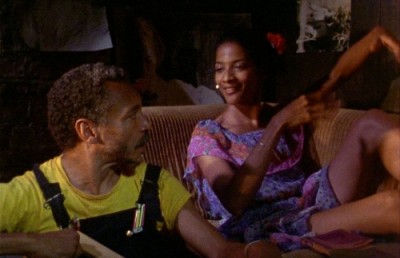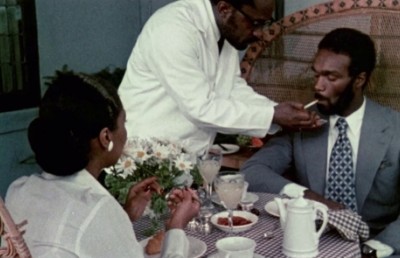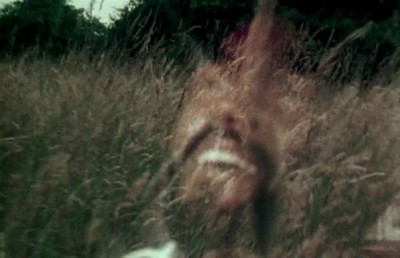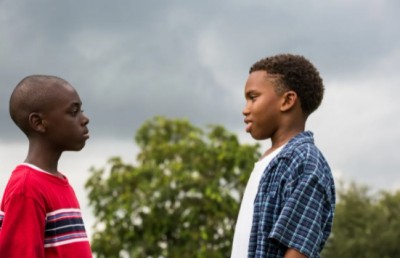Queen and Slim and Deconstructive Protest Cinema
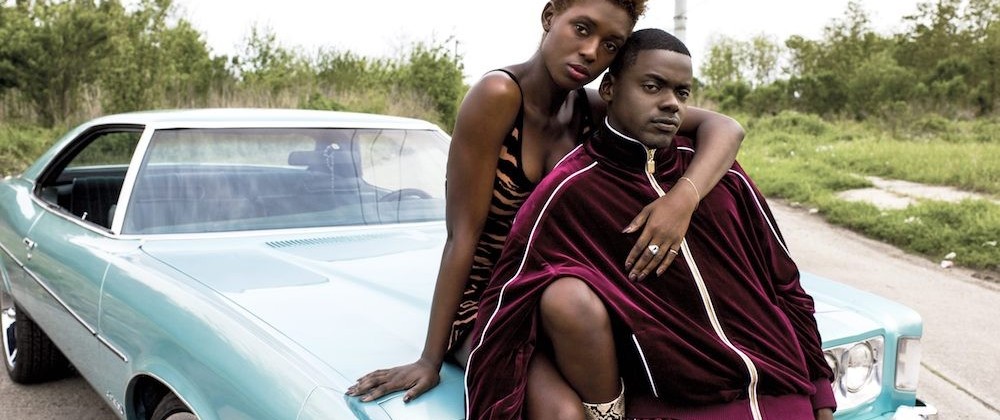
Black Lives Matter can be traced back seven years to the acquittal of George Zimmerman, the man responsible for the shooting of African American teenager Trayvon Martin in February 2012. The drop of all charges sparked outrage, precipitating the hashtag #BlackLivesMatter, but the movement became nationally recognised in 2014, gaining traction following street demonstrations responding to the murders of Michael Brown and Eric Garner, by police officers Darren Wilson and Daniel Pantaleo.
Black cinema underwent a similar process of evolution during this period. Retaliating in the wake of 2015’s #OscarsSoWhite controversy, a discernible correction course emerged as the industry witnessed a new wave of black filmmaking. Barry Jenkins’ Moonlight was released a year later, creating history by becoming the first film with an all-black cast to win the Academy Award for “Best Picture.” The progress continued with the widespread impact of Jordan Peele’s directorial breakout Get Out (2017), followed by the success of Spike Lee’s resurgent BlacKkKlansman (2018).
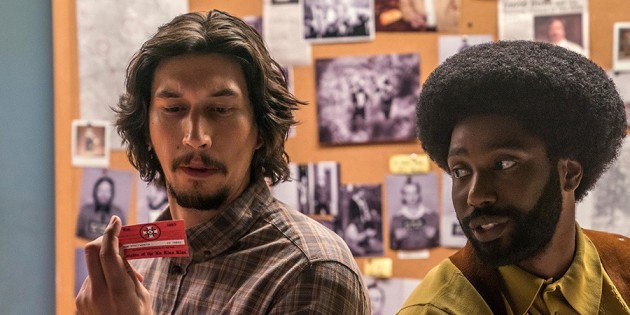
BlacKkKlansman
Alongside other notable works, these landmarks collectively paved the way for Queen & Slim, released at the end of 2019 in the US but at the start of 2020 in the UK. Melina Matsoukas’ debut feature signals the moment where black cinema became activist deconstruction, turning in on itself to scrutinise advocacy and protest simultaneous to enacting them. Only months after its release, George Floyd’s brutal murder by US police has signalled how important it is that this cinematic trajectory is accelerated, through specific engagement with Black Lives Matter as an intensified, self-conscious preoccupation within the storytelling itself.
Queen & Slim gives the movement a narrative rather than write the story more implicitly channelling its policies and values. Matsouka’s film constantly reminds you that it is one, which is present from its opening scene. Played by Jodie Turner-Smith and Daniel Kaluuya, the eponymous heroes are subject to romantic comedy familiarity, here manifesting as the awkward first date. The camera swings through the doors of a quintessentially American roadside diner, where we find Queen and Slim, awaiting the delivery of a wrong order. As Turner-Smith’s Queen indicates: “Didn’t you ask for scrambled eggs?” Kaluuya’s Slim did, and does not want to make a fuss, but Queen is so used to not getting what she deserves as an African American woman that she will not stand for it. As she tells her date: “I have a thing about that.”
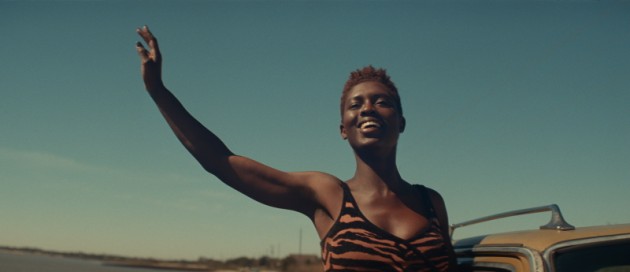
Queen & Slim
This pair of young black adults have grown up accustomed to discrimination, but the careerist Queen is particularly impeded by the lifelong treatment. After all, the reason she sits opposite Slim for their Tinder date is justified (and confessed) as the result of a bad day completely beyond her control. She tasks Slim with cheering her up after a day in court where “the state executed my client.” Slim questions the client’s innocence; Queen shuts him down, declaring that “even if he’s not, the state shouldn’t decide if he lives or dies.” Again, the powerlessness stems from Slim and her client’s blackness. One can imagine the obstacles lessening in severity and quantity if she was a practising lawyer fighting for white clients, not to mention having a different skin colour herself.
Legislative injustice pervades the entire film. Despite the protagonists’ awareness – of systemic oppression, of how black experience historically plays out as “cinema” – they are unable to escape their situation’s inevitable spiral out of control in the hands of a police officer. After a terrible first date of jokes not landing, sarcasm being misinterpreted, personalities clashing, Slim offers to drive Queen home. She playfully steals his phone to read his texts, prompting Slim to swerve as he tries to take it back. Almost instantly, a siren blares and lights flash in Slim’s rear-view mirror, all but spelling out the next scene’s fate to a spectator too versed in how these white officer-black civilian moments invariably play out. Queen has also seen it all before, hence her lawyerly instinct to prepare Slim and instruct how he must act during the altercation. Her initial control of the drama extends to telling officer Reed (played by Sturgill Simpson) how to do his job: “well, y’all like to shoot first and then ask questions.”
It only briefly goes to plan, denting the confidence Queen places in their innocence’s ability to steer circumstances. Reed tells them his reasons for pulling them over – the swerving, the failure “to execute a turn signal” – and when Slim asks if he can ask why he must step out of the car, Reed tells him he may not. The officer swiftly, erratically loses composure, pulling a gun on a baffled Slim. But the predictability of the situation permits the latter’s reversal of its outcome, who steals the former’s gun after it has fired at the intervening Queen, which Slim uses to shoot Reed dead. As Matsoukas’ title sequence begins, the pair are plunged into a film of their own making: a self-conscious spin on the ‘lovers-on-the-run’ conceit set against the contemporary backdrop of racial inequality, where black lives are fighting for their civil right to matter. Responsible for the trajectory their film takes, the pair’s self-awareness leads to the conclusion that “we gotta keep running until we got a better plan.”
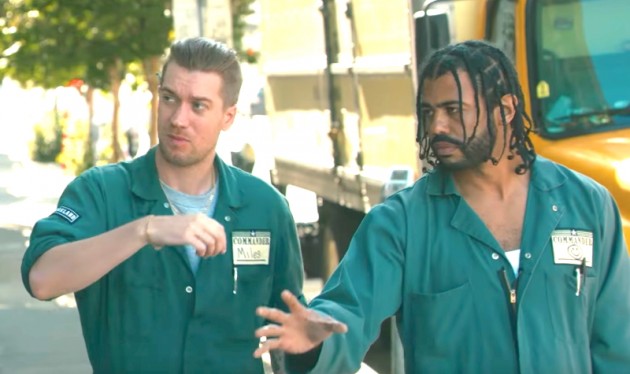
Blindspotting
The Reed episode underpins Queen & Slim. For this, the film recalls Blindspotting, directed by Carlos López Estrada and released in 2018. Written by and starring Daveed Diggs and Rafael Casal, its story revolves around the tenuous best friendship of Collin Hoskins (Diggs) and Miles Turner (Casal). As in Matsoukas’ film, the narrative pivot is a police shooting, witnessed by Hoskins during the final three days of his probation as a black convicted felon. The film dramatises the unjust association of gun crime to the black working class, depicting the kind of social magnet individuals in Hoskins’ position must contend with, despite their repentance for an unrelated crime. He attracts misfortune because he lives and breathes a culture that impulsively characterises him as a criminal. After inadvertently witnessing a white officer shoot an unarmed black man on the run, he is subjugated by this horror for the remaining runtime. Conditioned by its repercussive promise, Hoskins knows that his complete innocence means nothing and that ramifications will come, it is just a matter of when. The film stages the anxiety in the form of hallucinations, becoming a stylistic counterpart to Queen & Slim, where the shooting’s outcome differs and this narrative anchor is dressed in a realist aesthetic.
Instead, law enforcement manifest as an idea. Matsoukas’ self-reflexivity is not a license for surrealist departure as much as a platform for an urgent wakeup call. Her film’s conviction relies on its spectator’s ability to draw parallels with their own, tangible experiences of the twenty-first century inequality crisis. Queen and Slim are on the run for what becomes a six-day manhunt, but for most of this the hunters are reduced to a word or image, filtered through social media and circulated news before reaching the protagonists. Early on, the pair stop for food despite the risk of being spotted. Confirming the speed at which their story has spread, they ask a child in a drive-through parking lot if he wants to make a bit of money by fetching their order, but he immediately recognises their faces from TV. The police rarely transgress this absent presence, and we only see them over halfway into the film. At an auto repair shop, Queen keeps a close eye on the mechanic while Slim goes to the bathroom. He is equally aware of who the pair are, but an ostensible ally. Slim takes the landline telephone in with him because he has seen the film where the traced phone call is the criminal’s undoing. Here, he cannot refrain from calling home to check on his parents, who put the phone down as a house full of listening officers is revealed.
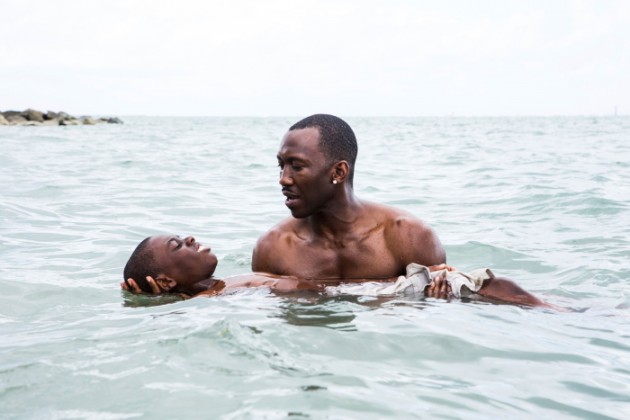
Moonlight
We do not have to see the authorities to know that they are waiting in the shadows, a lack of freedom relatable for black Americans on the other side of the camera. Barry Jenkins exposed this incarceration first in Moonlight, then in the James Baldwin adaptation If Beale Street Could Talk (2018). Moonlight saw Chiron (played at three stages of his life by Alex Hibbert, Ashton Sanders, and Trevante Rhodes) internalise this as a young gay man coming of age in an impoverished area of Miami. Chiron’s confinement is exacerbated by physical and emotional abuse from his mother, a drug addict played by Naomie Harris, but also by the bullies at school. If Beale Street Could Talk is more in line with Queen & Slim’s tension between the law and the black everyman. Like Baldwin’s novel, Jenkins’ film follows Clementine “Tish” Rivers (KiKi Layne), who must clear her innocent husband’s name of a murder he did not commit. Alonzo “Fonny” Hunt (Stephan James) must fight for liberation from behind bars, a desperation amplified by news that Tish is pregnant with his child.
Matsoukas steps outside of these major works. From the vantage point, able to look back at black cinema’s metanarrative, her film advocates the unrelenting pursuit of freedom. If Queen and Slim’s capture seems inevitable, this only escalates the necessity to evade it for as long as possible. Each narrative development brings further rebellion, all since Slim’s inversion of a cinematic staple that sees the black civilian shot dead, not the white officer – see George Tillman Jr.‘s The Hate U Give (2018), Ryan Coogler’s Fruitvale Station (2013): the true story of Oscar Grant’s tragic death in 2008, or Spike Lee’s classic Do the Right Thing (1989), whose Radio Raheem dies after an officer refuses to release a chokehold. The final case was a frighteningly prescient forecast for the murders of Eric Garner and George Floyd, the latter triggering historic escalation of the Black Lives Matter movement. In response to both the fictional and real tragedies that have come before them, Queen and Slim persistently contradict their limitations as black characters. At one point, the pair pull up on a country road, stopping to admire a field of horses before Slim rides one for the first time, a renunciatory symbol empowered by the fact that “Nothing scares a white man more than seeing a black man on a horse.” Queen’s proclamation is attached to a justification: “Because they have to look up at him.”
The self-awareness is equally responsible for the treatment of genre. Greeting their arrival at the first safehouse, Queen’s Uncle Earl (Bokeem Woodbine) acknowledges the legacy of Arthur Penn’s 1967 biographical crime film: “Well if it isn’t the black Bonnie and Clyde.” Queen & Slim aligns itself with this but also Pierrot le fou (1965), Badlands (1973), Wild at Heart (1990), Thelma & Louise (1991), Natural Born Killers (1994), and more. But Matsoukas extends the lovers-on-the-run subgenre only to subvert and rebrand it. Well into Act Two of her version of this kind of film, Slim pulls his gun on a young gas station attendant, unable or unwilling to pay after filling the car, or both. The attendant is unstirred, telling Slim that he is happy to pay for the gas himself if allowed to hold the gun for a few seconds – a glaring critique of trigger-happy white America, whose problems can be traced in childhood upbringings and adolescence. Slim grows nervous the longer the attendant holds it, and especially when he points it directly at him, but the tension dissolves as his steely gaze drops and is replaced by a grin, undermining Slim’s (and our) expectation that the outcome would be any different. Both developments signpost a complete diversion from Arthur Penn’s model, which would see Clyde shoot the clerk without hesitation or even drive away with Bonnie rather than initiate a stick-up in the first place.
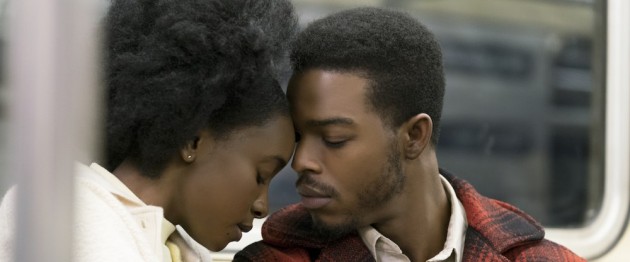
If Beale Street Could Talk
The evidence suggests that the whole archetype is malfunctioning, implied from the moment Slim wonders “What if I messed up God’s plan?” towards the beginning of the film. Elsewhere, the criminals’ decision to shave their heads to be unrecognisable is a debate rather than something that happens organically. Despite the stakes, Queen is as worried as Slim about ruining her hair. Close calls also begin to accumulate, which consolidate their unpredictability compared to how they would play out in past crime films. As with the horse riding, Slim asks Queen if she wants to go for a dance because they might not have the opportunity for a second date. When there, the bartender instantly recognises Slim but disclaims it with the relief that they are safe here, a bar with almost entirely African American clientele. Peripheral characters would not so forthrightly help Bonnie and Clyde or cinema’s conveyor belt of equivalents, so Matsoukas’ film internalises their lessons and rewrites them.
The commonality of this list of acclaimed, beloved films is the exclusive whiteness of the characters and stories. Queen & Slim’s deconstruction of the subgenre provokes the rectification of this. Her film stimulates activist progress by reframing the methodology, invigorating Black Lives Matter with a film about the movement rather than another by-product. Her approach extends the important groundwork of Barry Jenkins but also Jordan Peele, whose Get Out and Us (2019) brought reformation to the contemporary horror film. Overturning the formulaic marginalisation of black characters, Peele’s films centralises the issue and gives them a platform to confront the very society who kill them off (usually in Act One) head-on.
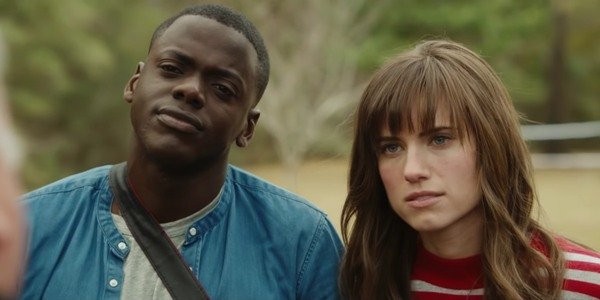
Get Out
Labelling Matsoukas’ film “deconstructive”, self-conscious, postmodern, or another attributable description relies on the modes that reflect this, which co-depend from points of tonal antithesis: inconsequence and urgency. Queen & Slim deconstructs “protest cinema” to better understand it and help take it forwards, but not without giving romantic comedy framework the same treatment. Despite the opening’s derailment of the first date, it is carried out regardless alongside the situation at hand, followed by a “second” when the pair go for a dance. Their already terrible night’s turn for the worse ironically brings them closer, both a survivalist necessity and revelation that they are starting to like one another. This brings unpretentious engagements such as Queen poking fun at how loudly Slim eats after the drive-through parking lot encounter. Later, the transparency takes a more serious form, Slim asking “Are you scared?” and Queen lying a “No.” She questions how Slim knew; he replies “You answered too fast. My Dad always told me if you answer too quickly, you had a lie ready to go.”
Self-reflexivity seeps into the dialogue and its layers of subtext, highlighting the reality that these characters have been raised to be alert and internally prepared for confrontations they do not deserve but cannot escape. Returning to The Hate U Give, the idea is summarised by the way Starr Carter (Amandla Stenberg) and her family stage dinner table rehearsals of how to act when pulled over by the police, training that sees her survive an encounter which kills her innocent best friend. The hardwired defence mechanism saves her, just as preparation means Slim knows how to bend his knees and roll when jumping from a high window. But Queen embodies the possibility that such inwardness can be detrimental: “I’m used to saying I’m okay when I’m not.” This precarity reflects the distinction between comedy and seriousness, carried through until the film’s denouement. Unsure where to head next, Queen and Slim sleep in the car and are awoken by a man prodding them with a shotgun through the window. Claiming that he can arrange a plane to get them out of the country, the sceptical protagonists follow him, breaking the ice with a comment on his marijuana smoking. The joke’s sinister undertone is unequivocal: “That’s why we smoking all the time – we paranoid as fuck.”
The strength of the pronoun speaks for the powerful allegiance of black America helping the pair get this far, from the aid of relatives to bartenders to this passer-by. This community is united in their support of Queen and Slim and their story’s ability to force change. This sees a black officer betray his force, secretly allowing the pair to escape after discovering them sneaking out of a car garage as a police search is conducted in the streets around them. It also underpins the episode at the auto repair shop, where Queen’s distrust of the mechanic (despite his skin colour) leads to the solution that his son take the pair for a walk while he is left to fix the car. Here, Junior (Jahi Di’Allo Winston) gushes about how much he admires them and what they have done. The empowerment is why Junior is going on a protest tomorrow in their honour, which the film cuts to when Queen and Slim’s journey has moved on. If not for the picture quality, the footage could have been lifted from real events across the world in June 2020. Junior marches forwards, furious, chanting “Let. Them. Go” with the masses: a situation that quickly devolves into police use of tear gas, riot shields, and batons in a nonsensical effort to “control” the crowds. Becoming the film’s most upsetting source of tragedy, Junior shoots a black officer trying to reason with him. The scene is the peak of Matsoukas’ central dilemma: the lengths black lives must go to just to be heard.
This shared understanding is all Queen & Slim leaves its spectators with as they come out of the experience watching it. Like Spike Lee’s BlacKkKlansman, the narrative energy is driven by collective agreement that the on-screen inequality and oppression is deeply wrong, which Lee escalates to absurdity, rendering each character we side with as aware of how preposterous the story is as the theatre of people watching it. Matsoukas’ protagonists are within touching distance of their plane to safety when her film goes full circle, sirens blaring as they do not even look back to confirm what the sound signifies. Ignoring the loudspeaker’s instructions to get on the ground, Queen delivers her final words before being shot in the chest: “Can I be your legacy?” Responding “You already are”, Slim takes her corpse in his arms and walks towards the barricade of parked police cars, where he meets the same fate. As such, the film leaves us with precisely the thing Queen requests: their “legacy.”
The legacy is fictional, so the film meets it on these terms and supplies an epilogue accentuating the impact of their sacrifice. The funeral is a cultural event, various murals appear, the photograph taken at the repair shop (doubling as the film’s poster) is spread ubiquitously… all confirming Junior’s claim on his walk with Queen and Slim, who broadcasts finally name as Angela Johnson and Ernest Hines: “You’ll be immortal.” The film generally seeks this status, not simply telling a black story or showcasing these lives mattering, but actively elevating itself above these levels of representation by internalising didacticism within the fiction. Whether it will echo the cultural influence of something like Kendrick Lamar’s To Pimp a Butterfly (2015) – whose track ‘Alright’ so self-consciously addressed the activism theme that it second-guessed its chant at protests across the US – will transpire over time. Regardless, Queen & Slim shifts into position as the centrepiece of how the new film decade is projected to build on the work of Ryan Coogler, Barry Jenkins, Spike Lee, Jordan Peele, and Dee Rees during the previous.
Matsoukas’ film was the natural culmination of these releases, paving the way for her style of metacommentary to develop as cinema is used more and more pointedly as a political symbol. The industry’s underrepresentation crisis can only move towards progress as the next wave of black stories are told against this evolved, hyper self-conscious landscape. A history of neglecting black voices signals complicity, necessitating next steps such as the kind of deconstruction operating in Queen & Slim. This vital, reformatory process runs parallel to broader society toppling the statues celebrating our shameful past: the pause for breath in between marches, protests, petitions, and social media circulation of our solidarity with the victims of this inexcusable mistreatment.
Cheryl Dune’s semi-autobiographical The Watermelon Woman (1996) – the first feature ever released by a black lesbian director – opens with the declaration “I’m working on being a filmmaker. The problem is I don’t know what I wanna make a film on. I know it has to be about black women because our stories have never been told.” Two decades on, black women’s stories are finally beginning to be told, take Dee Rees’ Pariah (2011) for example: a lesbian coming of age story focusing on seventeen-year-old African American Alike (Adepero Oduye). Melina Matsoukas’ debut is another important film directed by a black woman, whose landmark status stems from its deconstructive treatment of cinematic genre, style, and the history of black representation, but also of Black Lives Matter. This pair have only come into contact in the past five years, moulding the shape of films up to 2020. As a result of Queen & Slim lighting the way, we can infer the form this relationship will take within the films released next.
This essay was initially posted as a stand alone on July 18, 2020.



